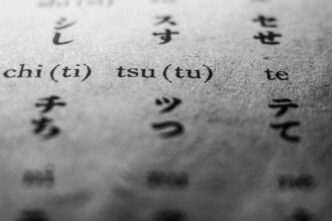For the first time in seven decades, Japan is poised to overhaul its official system for romanizing the Japanese language. The Ministry of Education is expected to approve new rules this fiscal year, transitioning from the long-standing Kunrei-shiki system to the more universally familiar Hepburn style.
Background: Outdated Standard vs. Everyday Usage
In 1954, the Japanese government formally established the Kunrei-shiki romanization system—rooted in internal linguistic logic and etymology—as the official standard. Despite this, the more intuitive Hepburn system has dominated daily life, appearing on road signs, passports, transportation guides, and in global usage.
The pronounced disparity has caused confusion, especially among learners and visitors. In Kunrei-shiki, for example:
- ち becomes ti (instead of chi)
- し, じ, つ are si, zi, tu (instead of shi, ji, tsu)
What’s Changing: The New Proposal
The Council for Cultural Affairs has formally recommended adopting Hepburn-style spellings across official and educational materials. Key changes include:
- Consonant + i sounds to adopt Hepburn spellings:
- ti → chi, si → shi, tu → tsu, hu → fu
- ti → chi, si → shi, tu → tsu, hu → fu
- Yōon (contracted sounds) standardized to Hepburn style: e.g., tya → cha, syu → shu
- Long vowels can be indicated with a macron (e.g., kāsan) or by doubling letters (kaasan)
- Exceptions will be made for personal and organizational names, allowing individuals or entities to maintain preferred romanizations.
Implementation Timeline and Impact
The proposed changes aim to roll out gradually, with key milestones expected to include:
| Area | Timeline |
| Textbooks & Schools | Transition starting within current fiscal year; full inclusion of Hepburn in new curriculum guidelines by 2026 |
| Passports & Official Documents | New romanization to take effect around January 2027 |
| Station Signage (JR East) | Replacement of around 12,000 signs by end of fiscal 2028; new signs may include NFC/QR codes for multilingual support |
| Digital Input Systems (IMEs) | Updates to follow by end of 2026 to align with new official standard |
Why This Matters
- For Learners & Visitors: The shift promises greater clarity—words like Shibuya or Aichi will consistently match pronunciation, reducing guesswork.
- For Education: Transitioning away from complex Kunrei-shiki eases learning for elementary students and enhances consistency across language curricula.
- For Business & Administration: Standardizing romanization facilitates smoother international communication and reduces discrepancies in documents, improving processes like passport issuance and global trade. Deloitte projects a net positive cost-benefit over five years.
- For Digital Platforms: Unified romanization will boost search accuracy and digital usability by 5–8%, according to major IT providers.
Public and Expert Reaction
The announcement has sparked lively discussion online:
“Honestly, as someone who first started learning Japanese from a book using the Kunrei-siki romanization… this is probably a good thing. It’s confusing, out of date and ultimately useless.”
— Reddit user on r/LearnJapanese
“Basically they’re legitimising the existing practice of using the more natural English spelling (Hepburn)… standardising on Shibuya rather than Sibuya…”
— Reddit user on r/worldnews
Conclusion
After 70 years, Japan is finally aligning its official romanization with widespread practice. The shift to Hepburn promises clearer pronunciation, international consistency, and enhanced usability across education, travel, digital platforms, and business. As implementation proceeds, Japan moves toward a more globalized, user-friendly romanization standard.
Source:https://www.japantimes.co.jp/news/2025/08/21/japan/panel-hepburn-style-romanization/
















